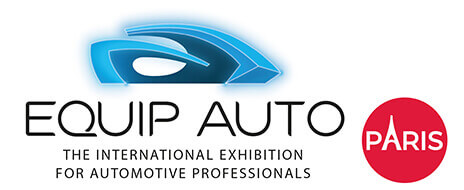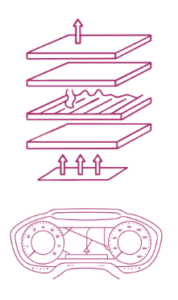(R)EVOLUTION - Liquid crystal displays – Towards the digital dashboard
Liquid crystal displays – Towards the digital dashboard
In the mid-1980s, the automobile entered a new dimension: that of the digital interface. While vehicles had long relied on analogue gauges, dials and indicator lights, manufacturers began to incorporate liquid crystal displays (LCDs) into dashboards, which were already widely used in consumer electronics, particularly in watches and calculators.
These early screens profoundly changed the way motorists received information. More compact, easier to read and more flexible than traditional instruments, they could display not only speed and engine speed, but also new data such as average fuel consumption, remaining range, warning messages and comfort information. The layout of the information could be adapted, foreshadowing the idea of a customisable interface tailored to the driver’s needs. For the first time, the dashboard was no longer just a simple mechanical display: it became a true communication centre between the machine and the user.
At the same time, another innovation is surprising and intriguing: voice synthesis. Some high-end cars incorporate systems capable of warning the driver by voice in the event of a technical problem (low fuel level, door not properly closed, headlights left on) or assisting them with navigation. This technology, which may seem rudimentary by today’s standards, nevertheless marks a decisive turning point: the car is beginning to “talk” to its driver, making interaction more intuitive and natural.
These advances, still limited in their capabilities, nevertheless paved the way for a major transformation. The following decades saw the rise of touchscreens, which centralised the management of navigation, infotainment and vehicle settings. Then came head-up displays, projecting essential information directly into the driver’s field of vision to enhance safety. Finally, intelligent voice assistants, powered by artificial intelligence, offer a more seamless driving experience, where the voice alone is enough to control many functions.
From the advent of the first LCDs and synthetic voices to today’s connected and intuitive experience, the evolution of automotive interfaces illustrates a silent but decisive revolution: one that has turned the passenger compartment into a veritable digital cockpit, where technology is at the service of comfort, safety and driving pleasure.



